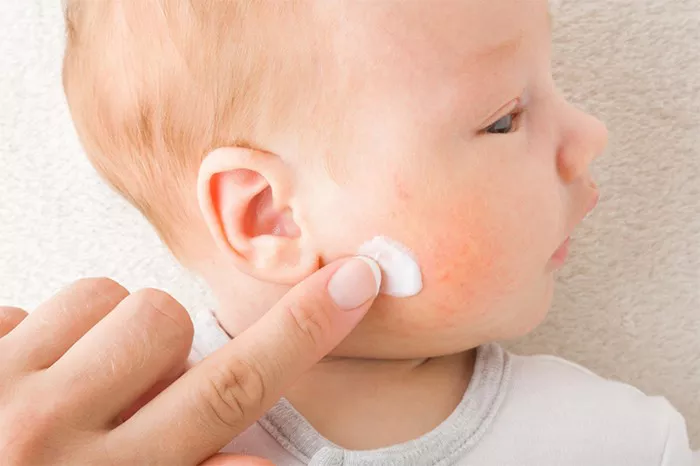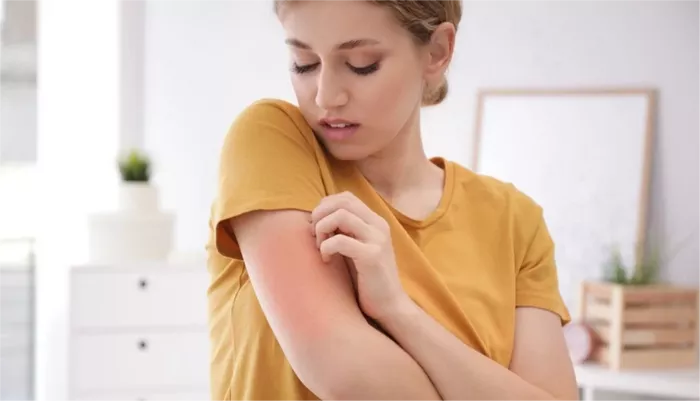Ringworm is a common skin condition that many people encounter at some point in their lives. It’s known for the itchy, red, circular rash it causes, which can be alarming if you’re not familiar with the cause. Despite its name, ringworm is not caused by a worm, and understanding what it really is and how it spreads is essential to addressing this condition. So, are ringworms parasites? Let’s explore the truth behind ringworm, its nature, how it spreads, and how to treat it.
What Is Ringworm?
Ringworm, also called tinea, is a fungal infection that affects the skin, hair, or nails. It is named for the ring-shaped rash it creates, which can look like a worm under the skin. The term “ringworm” is misleading because, despite its name, the condition is not caused by any kind of worm. It’s the result of a fungal infection that thrives in warm, moist environments.
The fungi that cause ringworm are a group of organisms known as dermatophytes. Dermatophytes are types of fungi that feed on keratin, a protein found in the skin, hair, and nails. These fungi are commonly found on surfaces like floors, clothing, and bedding, and they can infect the outer layers of the skin.
Are Ringworms Parasites?
To understand whether ringworms are parasites, we need to know what a parasite is. A parasite is an organism that lives on or inside another organism (called the host) and benefits at the host’s expense. Parasites typically rely on the host to survive, causing harm or damage in the process.
Ringworm does not fit the definition of a parasite because it is caused by a fungus, not a living organism that feeds on another living organism. Unlike parasites, fungi like dermatophytes don’t invade the body’s internal systems or organs; instead, they grow on the outer surface, feeding on keratin. Ringworm is not a parasitic infection, but rather a superficial fungal infection.
So, while it may appear to be a type of skin condition caused by a “worm” or parasite due to its name, it is, in fact, a fungal infection and not parasitic in nature.
Types of Ringworm Infections
Ringworm can appear on different parts of the body, and the type of ringworm infection is often named based on the area it affects.
Tinea corporis (Body Ringworm): This is the most common type of ringworm and occurs on the body. It typically starts as a small, red spot that grows into a circular rash with raised edges.
Tinea pedis (Athlete’s Foot): This type affects the feet, often between the toes. It can cause itching, redness, and peeling of the skin.
Tinea capitis (Scalp Ringworm): Ringworm of the scalp is common in children. It causes hair loss, dandruff-like flakes, and a scaly rash.
Tinea cruris (Jock Itch): This form affects the groin area. It causes redness, itching, and a rash with well-defined borders.
Tinea unguium (Nail Fungus): Ringworm can also affect the nails, causing them to become thick, discolored, and brittle.
Each type of ringworm has its own symptoms, but all are caused by the same group of fungi.
How Does Ringworm Spread?
Ringworm is highly contagious and can spread from person to person, from animals to humans, or from contaminated surfaces. Here’s how ringworm is commonly transmitted:
Direct Contact: The most common way ringworm spreads is through direct contact with an infected person or animal. If someone with ringworm touches you or if you share a towel, comb, or other personal items, the infection can be transmitted.
Animal to Human: Ringworm can also spread from pets to humans, especially if the animal has visible signs of ringworm. Cats and dogs, particularly those with compromised immune systems, can carry the infection without showing symptoms themselves.
Contaminated Surfaces: Ringworm can live on surfaces like floors, gym equipment, shower stalls, and even bedding. If you touch these contaminated surfaces, you can contract the infection.
Soil to Skin: In rare cases, ringworm fungi can also be transmitted through contact with contaminated soil, although this is less common than person-to-person transmission.
Because it spreads easily in places like schools, gyms, and homes with pets, it’s important to take precautions to prevent its spread.
Symptoms of Ringworm
The symptoms of ringworm can vary depending on the area of the body affected. Common symptoms include:
Red, Circular Rash: The most noticeable symptom is the rash itself. It usually starts as a small red patch and expands outward in a ring shape with clear skin in the center. The edges of the rash may be raised or scaly.
Itching: The rash is often itchy, which can lead to irritation and scratching. Scratching the area can cause the infection to spread to other parts of the body or even to others.
Hair Loss (in cases of scalp ringworm): In cases of ringworm on the scalp, hair may fall out in patches, and the scalp may appear scaly and flaky.
Discolored Nails (in cases of nail ringworm): When the nails are infected, they may become thick, discolored, or brittle.
Peeling or Cracking Skin (in cases of athlete’s foot): The skin on the feet may crack, peel, or become painful, especially between the toes.
Risk Factors for Ringworm
Certain factors can increase the risk of developing ringworm. These include:
Close Contact with Infected Individuals or Animals: People who live with someone who has ringworm or who have pets with the infection are at greater risk.
Poor Hygiene: Not washing your hands or body frequently, especially after touching contaminated surfaces or animals, can increase the likelihood of getting ringworm.
Warm, Moist Environments: Fungi like dermatophytes thrive in warm, damp environments. This is why areas like locker rooms, swimming pools, and public showers are common places to pick up ringworm.
Weakened Immune System: People with compromised immune systems, such as those with HIV/AIDS or cancer, are more likely to get fungal infections like ringworm.
Tight or Wet Clothing: Wearing tight-fitting clothes or wet shoes for long periods can create a breeding ground for the fungi that cause ringworm.
Treating Ringworm
The good news is that ringworm is treatable. Since it’s a fungal infection, antifungal medications are the primary treatment. These medications are available in several forms, including creams, ointments, powders, and oral medications. Here’s how to treat ringworm:
Topical Antifungal Creams: Over-the-counter antifungal creams are effective for most cases of ringworm. Apply the cream directly to the affected area as directed, usually once or twice a day. Common antifungal creams include clotrimazole, miconazole, and terbinafine.
Oral Antifungal Medications: In more severe cases or if the infection involves the scalp or nails, a doctor may prescribe oral antifungal medications like terbinafine or itraconazole. These medications work from the inside out to eliminate the infection.
Proper Hygiene: Keeping the affected area clean and dry is crucial in managing ringworm. Wash the area with soap and water, and dry it thoroughly before applying medication.
Avoid Scratching: Scratching the rash can spread the infection to other parts of the body or to others. It’s important to resist the urge to scratch, even though it may be itchy.
Disinfect Personal Items: To prevent reinfection, clean all personal items such as towels, clothing, and bedding. Avoid sharing these items with others.
Preventing Ringworm
Preventing ringworm involves good hygiene practices and avoiding contact with infected individuals or animals. Here are some tips for prevention:
Wash your hands regularly with soap and water.
Avoid sharing personal items like towels, combs, and shoes.
Disinfect contaminated surfaces regularly, especially in communal spaces like gyms and bathrooms.
Keep your skin dry and clean, especially in warm, moist areas like between your toes or under your arms.
Wear protective footwear in public showers or locker rooms to avoid contact with fungi on the floor.
Conclusion
While ringworm is often referred to as a parasite due to its name, it is actually a fungal infection, not caused by any type of worm. Ringworm is highly contagious but treatable with antifungal medications. By understanding its nature, how it spreads, and the symptoms to watch for, you can take the necessary steps to prevent and treat ringworm effectively. If you suspect you have ringworm, consult a healthcare professional for the best course of action and to prevent the infection from spreading.
Related topics:


























